I love to graze during the day, and would prefer potato chips to meat loaf. So when I started the low histamine diet and cut out snacks, it was incredibly hard. I backslid into inflammatory potato chips (see below) until I found a bunch of low histamine snacks I could both enjoy and tolerate.
So below is my ever-growing list of *mostly* vegan low histamine snack ideas from my own experience. The goal is to provide safe, but nutritious and delicious options for when you just don't want to or have the time to make a full meal.
Many of the ideas also contain one or more antihistamine foods, which you should try to emphasize when possible. Just keep in mind that eating more times a day generally makes you release more histamine into your body, so snacking between meals is generally discouraged on the low histamine diet.
Note that all of these are vegan friendly, low histamine snacks unless marked with an asterisk.
Medical Disclaimer: as with everything on this site, this article is provided for information only. I strongly urge you to speak with your doctor or a licensed medical professional in order to assess whether or not you have histamine issues, and/or which foods cause a histamine release for you personally. Every body is different, and some people will tolerate different foods than you do. Please keep comments respectful.
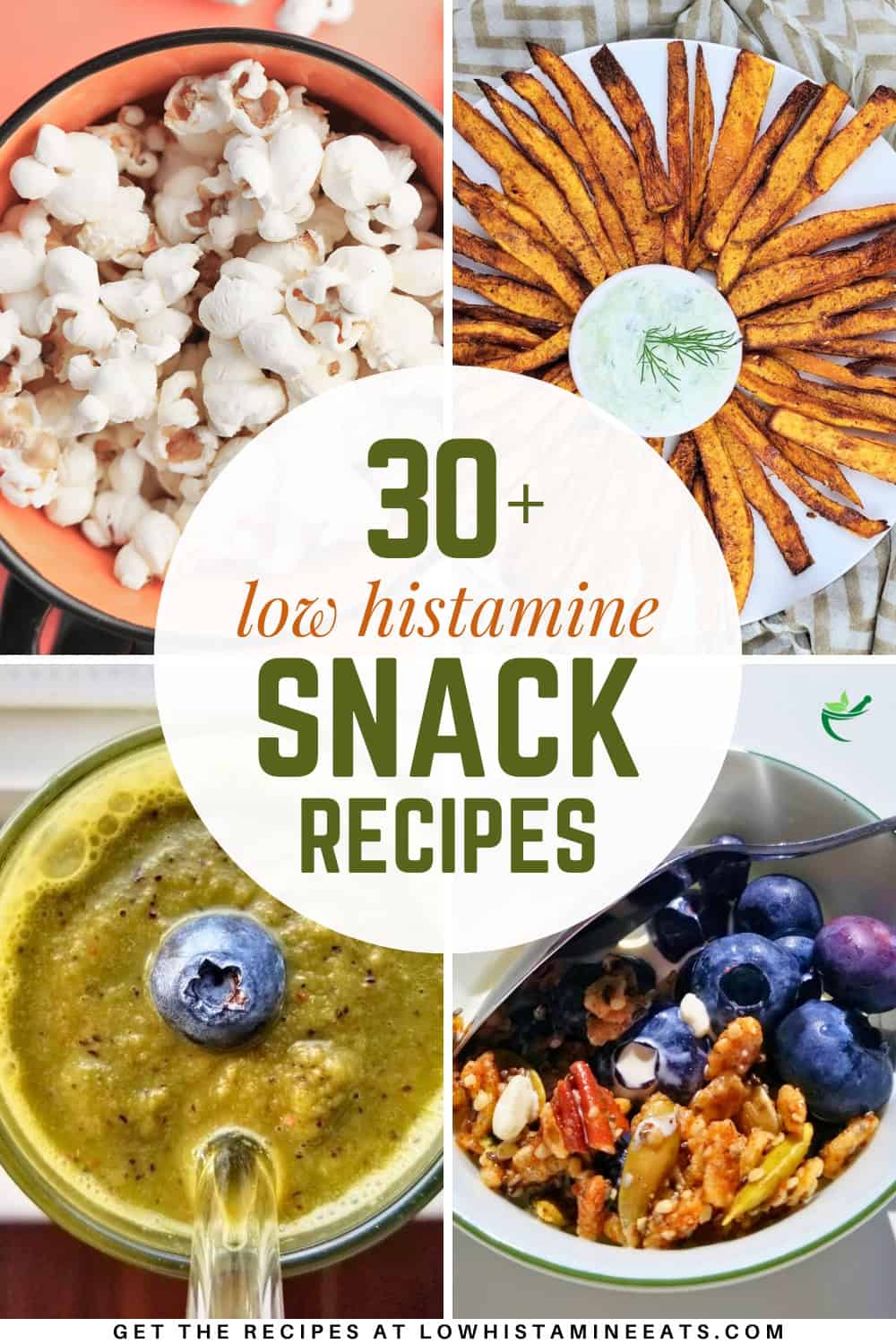
Jump to:
🍎 Classic Low Histamine Snacks
Rice Cakes with Shmear
This is pretty self-explanatory, but go find some rice cakes made with only rice and maybe some salt (I love these brown rice cakes). Then add shmear.
I prefer my rice cakes with salted macadamia nut butter or sunflower butter, and maybe some microwaved mashed blueberries if the occasion calls for it. You can pretty much put anything on rice cakes. Yes, even that.
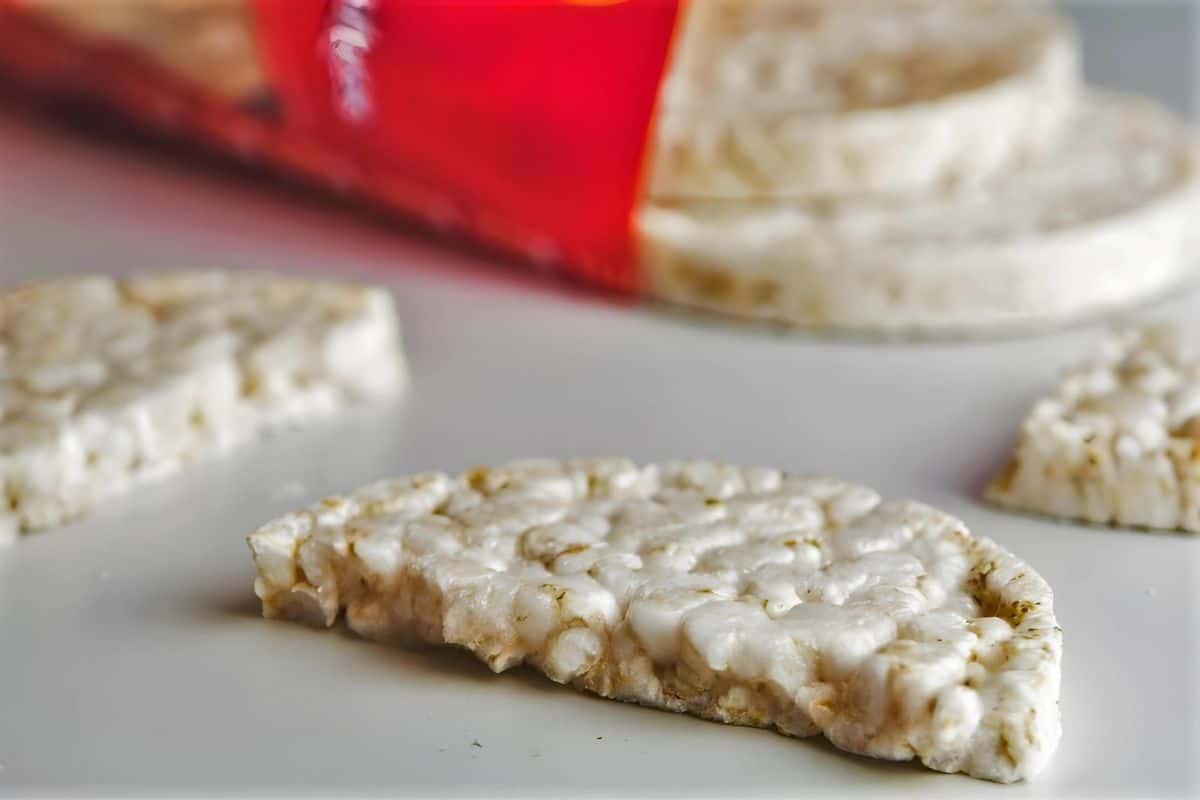
Sweetened Low Histamine Fruits
I had to include it or the list would be incomplete! Blueberries, apples, pears, mangoes, cherries, peaches, and usually raspberries are all safe, snackable low histamine fruits.
I particularly like bringing a tupperware of prepared fruit with a tiny container of coconut cream sweetened with manuka honey, and then pouring the cream all over the fruits and eating it all with a spork. This is the hiking companion to almonds that you never knew you needed.
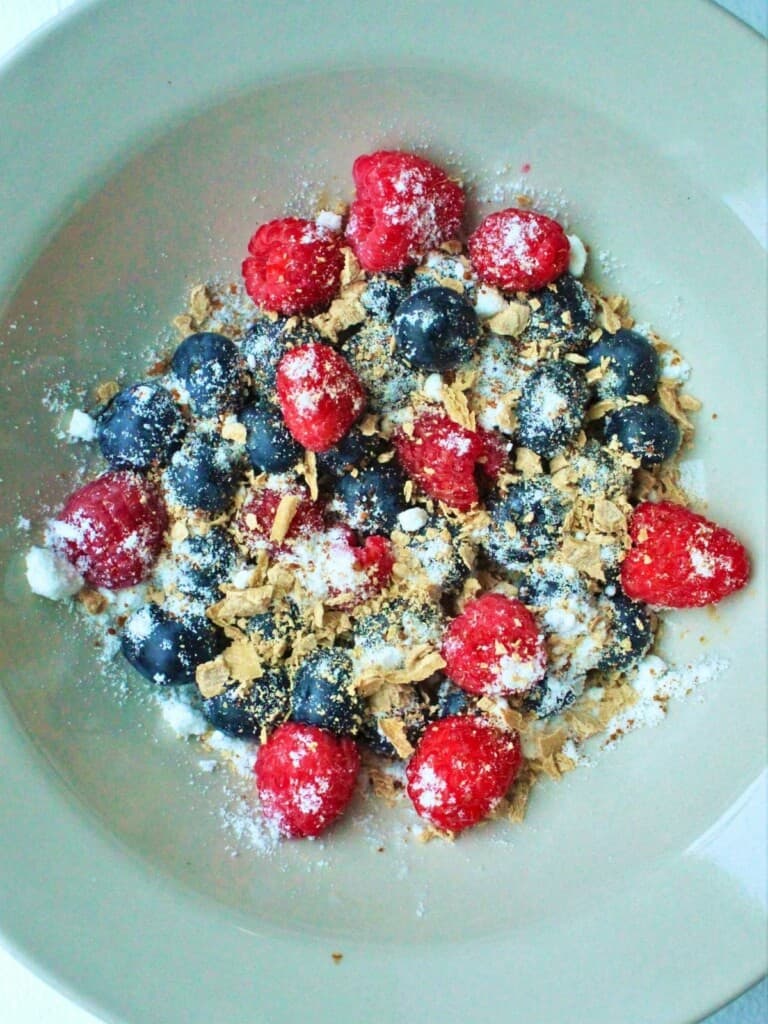
Carrot Sticks w/ Low Histamine Ranch
I know that carrot sticks have probably been the go-to of many of you, especially if you have kids. So liven them up with some low histamine ranch dressing!
There are a few versions of this dressing out there, but I like the recipes that use fresh herbs, as they tend to pack the biggest hit of flavor with none of the trigger warnings.
*Air-Fryer Zucchini Fries
Much like matchstick carrots, zucchini fries are relatively simple to make, and go great with ranch dressings or any number of other low histamine sauces. If you make these in an air-fryer, then you can also choose the size of the fries and the exact ingredients in the crispy coating.
Roasted Spiced Chickpeas
There are few things I find more satisfying than savory snack or meal when I'm hungry, and when I'm feeling exhausted, I turn to simpler options. Making roasted chickpeas takes just 15-20 minutes, and you can customize the spice blend to your tastes and tolerances.
Just remember to use soaked dried chickpeas instead of canned ones; canned foods tend to both those with histamine intolerance.
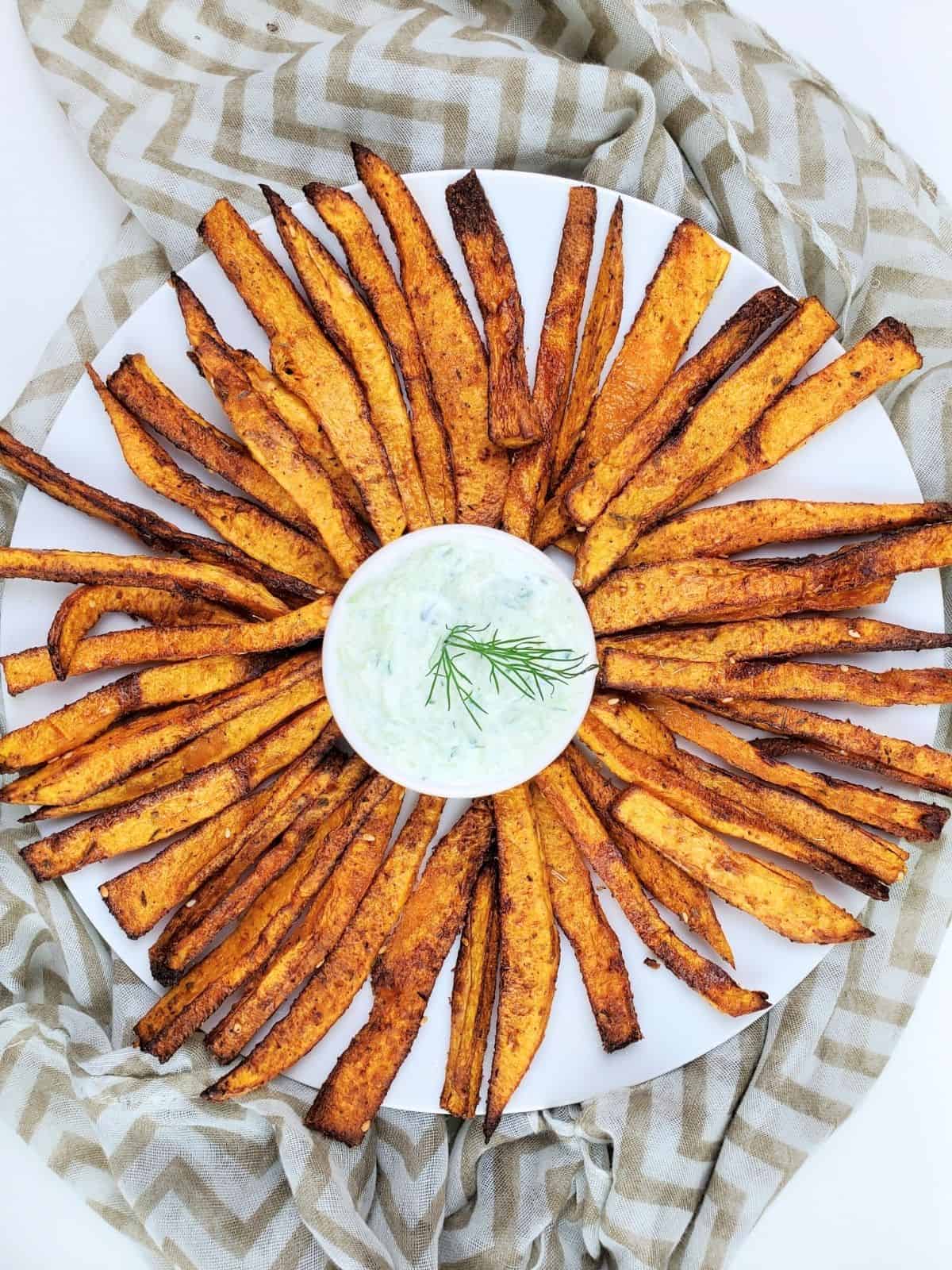
Air Fryer Butternut Squash Fries
These crispy air fryer butternut squash fries takes less than 30 minutes to prep and cook, and you can even use every part of the squash and store uncooked fries in the fridge. They'll quickly become your go-to healthy swap for french fries, with a rich and nutty flavor that even picky eaters will reach for more of!
Crispy Delicata Squash Fries
With an even milder flavor than the butternut squash fries above, these simple squash fries require no peeling and cook up in just 20 minutes, prep time included. No matter what sauce you drizzle or dip them with, this alternative to sweet potato fries is an undercover winner.
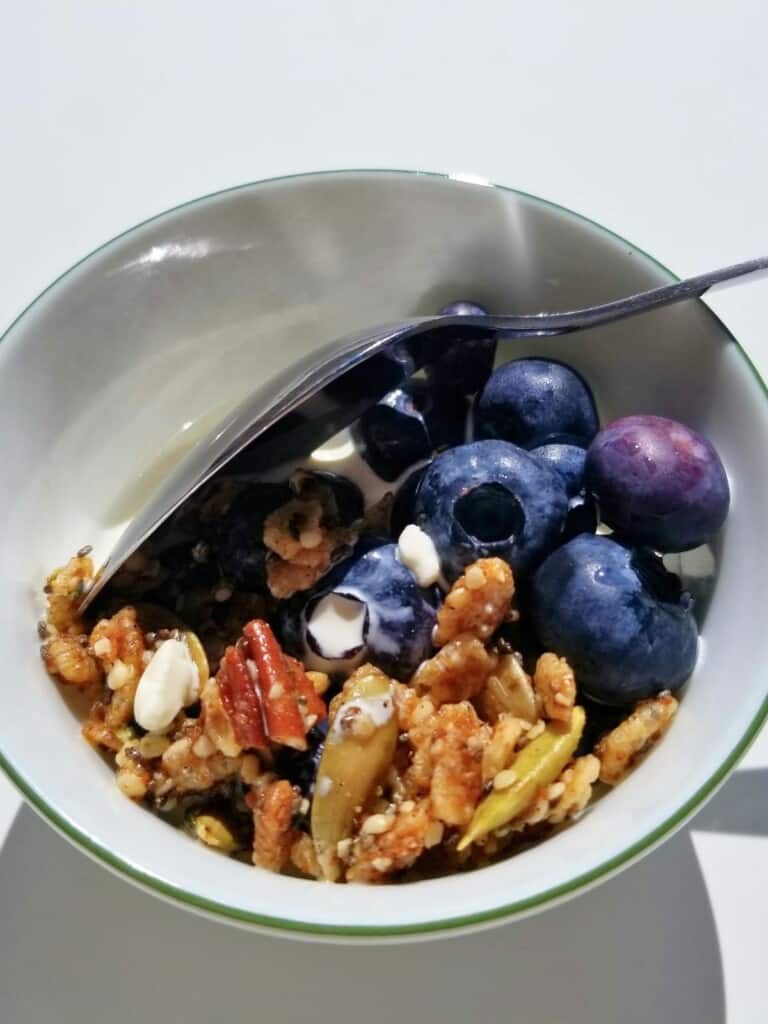
Homemade Trail Mix (or Granola)
While most store-bought trail mixes or granolas will have a thick coating of inflammatory sugar, a homemade version can include whatever you're currently able to eat.
To make a granola base, check out this recipe and adjust for your own tolerated ingredients. While chocolate is off the table, you can still add things like: shredded coconut, seeds, nuts, crystalized ginger, gf pretzels, and more!
Low Histamine Smoothie Bowl
There are so many ways to make a smoothies bowl that almost anyone in any stage of dealing with histamine could make one that they tolerate. I like to use this smoothie as a base, and then add on topping like granola, pomegranate seeds, and shredded coconut (not always tolerated).
Antihistamine Smoothie
Making smoothies are a great way to get nutrients in without missing out on the fiber or the flavor. I like to use an apple or blueberry base with a hint of monk fruit, in order to start out sweet. Then I'll add in various other fruits and antihistamine foods to try and maximize the impact & the flavor of each blend.
If you're anything like me, you also plan to freeze the other half of your smoothie so that you have more to choose from when you're feeling exhausted some days; I highly recommend it!
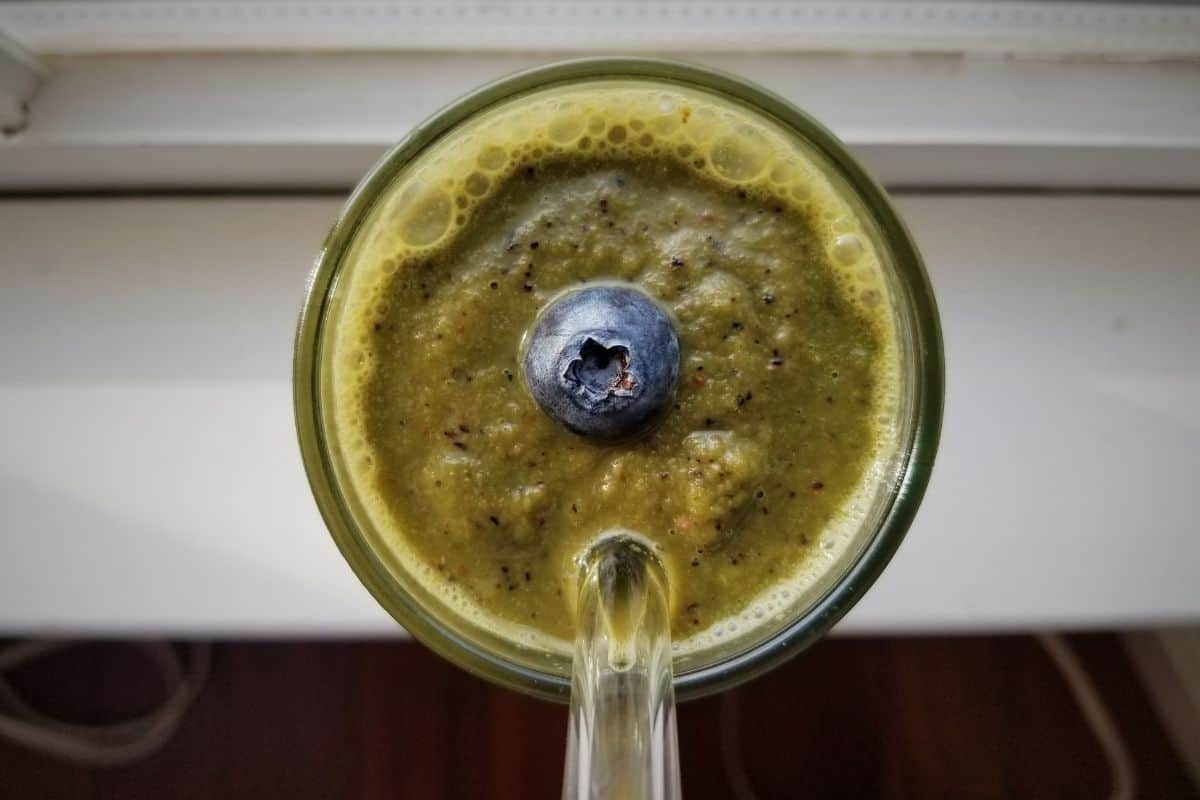
*Hard-Boiled Eggs with Sea Salt
This one is pretty self-explanatory, but it holds a special place in my heart. Hard-boiled eggs plus sea salt has been my main source of protein many days before (partly because I'm constantly deficient in iodine).
Ironically, the fresher the eggs, the harder they are to peel, but it's always worth it to have a "safe" low histamine snack on hand! Please note that some people don't do well with eggs whites, so try reintroducing yolks only before adding in whole eggs.
Zucchini Bread
This is not a personal favorite of mine, but fruit- and veggie-based breads are a great way to get back into eating sandwiches, or just enjoying a common comfort food. Some of you may prefer to explore recipes like carrot cake loaf or a soda bread, but just look out for trigger ingredients.
Copycat Clif Bars (Homemade)
My no-bake homemade Clif bars are tender with a green tint, enhanced with moringa to be a vibrant deep green— perfect for kid-friendly Halloween snacks! With ten common, low histamine ingredients, these copycat Clif bars pull together in the food processor in just 5 minutes.

Ginger Tahini Protein Balls
These no-bake tahini protein balls are a smoky, nutty treat, perfect for spooky fall activities or low histamine snacking anytime. They use two different types of sesame & a bit of honey to get a satisfyingly umami flavor with no protein powder and no oats— now that's hard to beat!
Sweet Tahini Sauce on GF Toast
My subtly sweet tahini sauce is creamy with a bit of tang, perfect for drizzling over a fruit salad, dipping in your favorite fruits, or even slathering onto your favorite gluten-free toast. With just five ingredients, this creamy tahini fruit dip comes together in a blender in under 5 minutes, just enough time to toast up a slice.
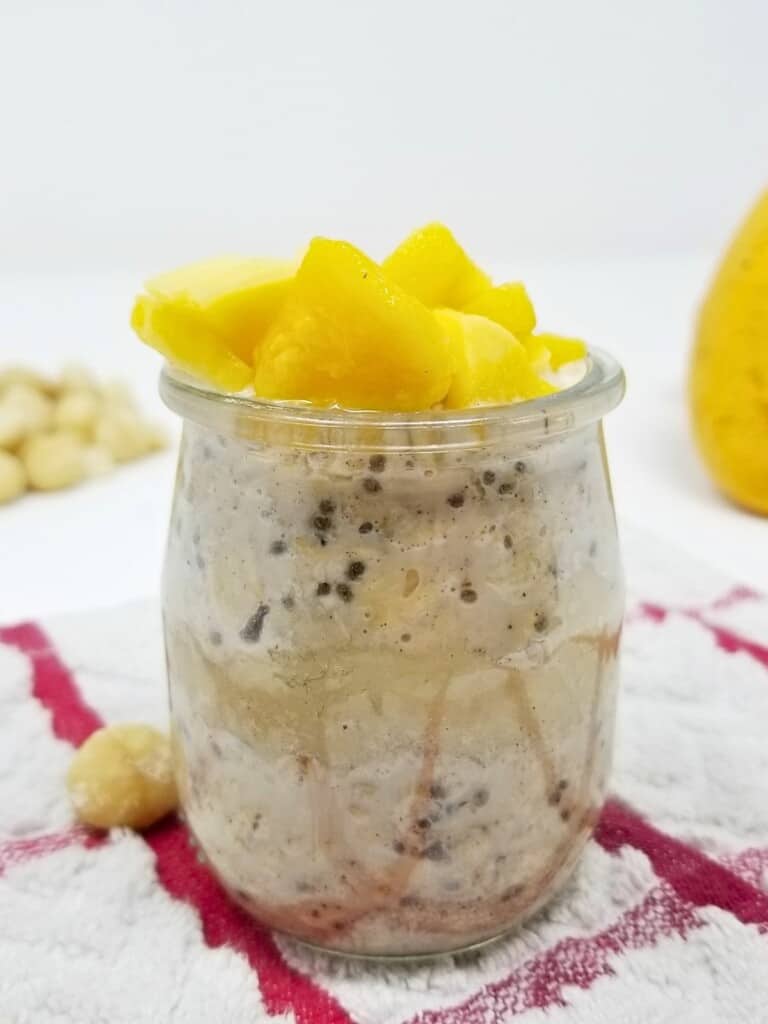
Half-Hour ‘Overnight’ Oats
Whether you need to work around no applesauce, no yogurt, or no chia seeds, overnight oats can come together easily & quickly in the fridge, then sweeten up with your favoirte chopped fruit and a dash of brown sugar syrup.
My quick ovenright oats take just 5 minutes and five ingredients to make, and are ready to eat in about half an hour, perfect for making when you wake up, getting ready, then enjoying a leisurely snack.
Low Histamine Energy Balls
Most energy ball recipes seem to include something off-diet to substitute: cashew butter, chocolate chips, peanut butter— so while I know it's possible to make low histamine energy balls, there are not very many recipes out there.
But for those of you still struggling to get a balanced enough diet with what you can tolerate, they just might be the answer, along with my copycat Clif bars.
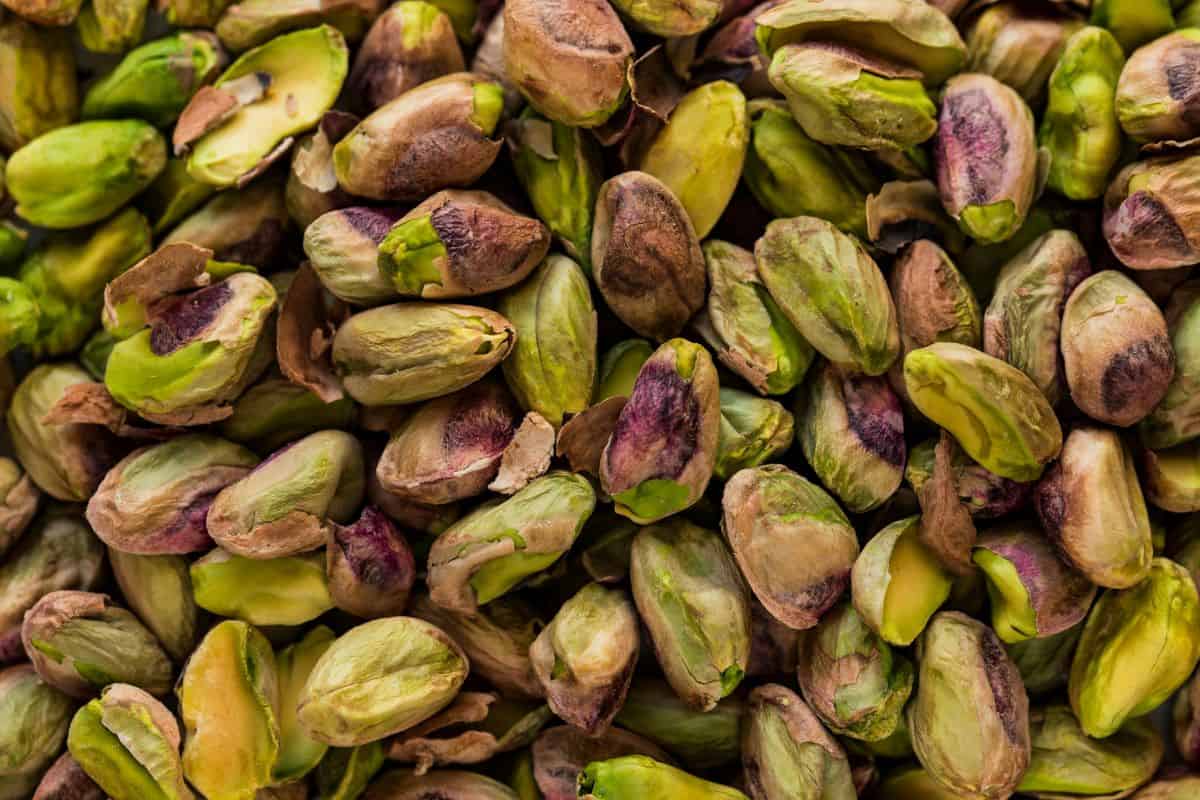
🥔 Crunchy Low Histamine Snacks
Seasoned Low Histamine Nuts
I am a huge fan of soaked & toasted nuts with plain sea salt. Sometimes I like to add a spice blend, but I think that high quality nuts have their own sweet + umami combo that is just more enjoyable plain.
If you want to add a low histamine seasoning, I recommend going South Asian and toasting your soaked & dried nuts in the oven with a drizzle of coconut oil + ginger, garlic, cumin, and a touch of cardamom (adding kaffir lime leaf levels this up hugely).
Low histamine nuts include:
- pecans
- almonds
- pistachios
- macadamias
- pine nuts
- pumpkin seeds
- hazelnuts
- Brazil nuts (only a few per day)
Popped Sorghum
Sorghum is both one of my favorite low histamine snacks to buy and the bane of my popcorn maker. The grain itself is a great low lectin alternative to popcorn, but I recommend buying it pre-popped rather than attempting it yourself (unless you have the patience of a saint).
This is because you'd be lucky to have 10% of your sorghum kernels pop when making it at home, even if you buy special sorghum for popping. I think that popped sorghum tastes like a cardboard imitation of popcorn, but with enough monk fruit and sea salt and ghee, I'll eat most anything crunchy.
Freshly-Made Popcorn
Blue or purple popcorn, popped at home in coconut oil and dressed in sea salt only, is actually rich in antioxidants (as well as lectins, if you have an issue with them).
Add in a touch of monk fruit or coconut sugar and you've just made a delicious low histamine dessert or snack! Just be sure to buy organic popcorn kernels when you can, otherwise there's a high chance of pesticide residue.
Potato Chips (yes, really)
Unless you have a nightshade or lectin issue, all potatoes are low histamine snack fodder— think chips, french fries, healthy hash browns, mashed, and more. This includes sweet potatoes, which also make great chips if you have an air fryer.
As long as they're fried in low histamine oils like avocado oil, you could even make a bunch of pre-salted chips with both regular and sweet potatoes. They keep pretty well in the freezer for easy reheating, and are great drizzled in garlic olive oil & another pinch of salt!
But if you don't have time for all that prep, you may be wonder are potato chips low histamine off the shelf? The answer is both yes and no, because most bagged potato chips have 10+ ingredients, making them hard to compare.
Potato chips histamine levels vary greatly, so your best bet for low histamine chips is a plain salted flavor, made in avocado oil or olive oil. There are a few brands which only use olive or avocado oil, one of which is Boulder Canyon Potato Chips, which are easily available in the US.
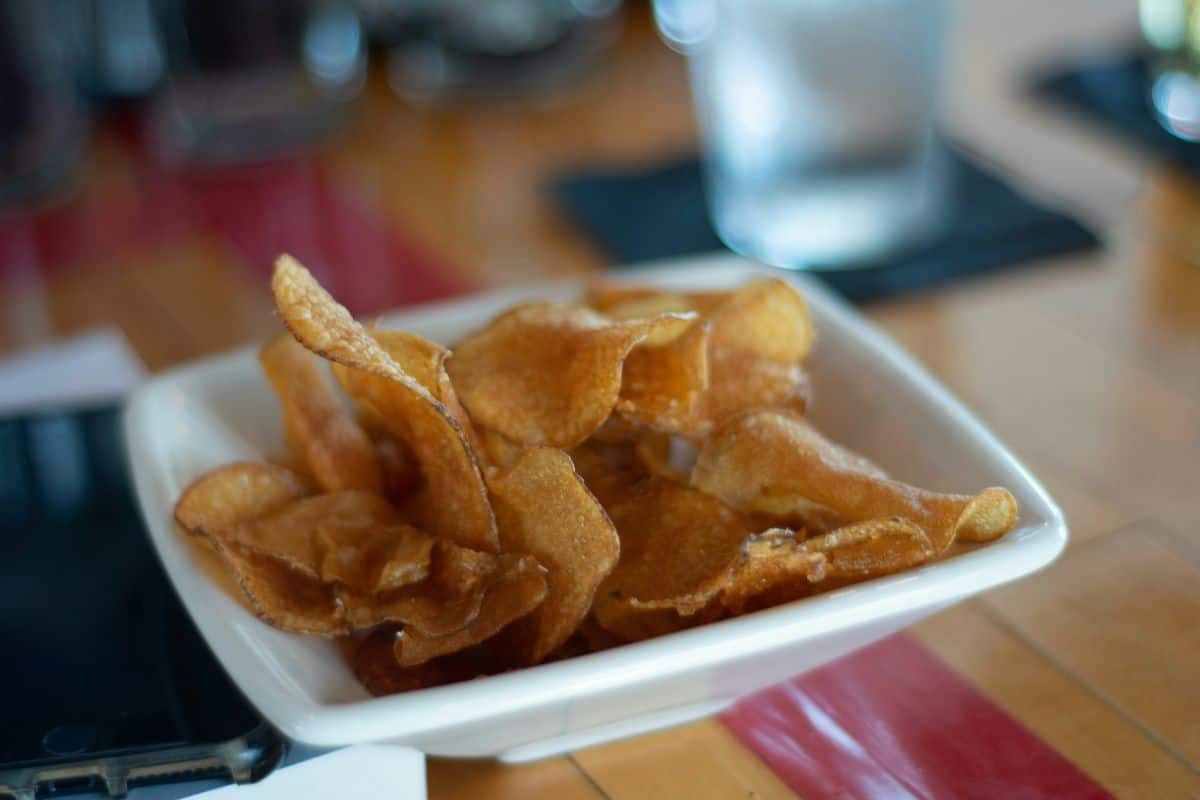
Homemade Hummus & Blue Corn Chips
Over the spring, hummus became my new favorite food to make in batches and freeze. The ingredients— chickpeas, tahini, olive oil, garlic, cumin, and a touch of lemon juice— are all histamine-friendly (you can switch lemon for lime or pomegranate juice) and freezable.
I soak dried chickpeas overnight and then cook them in a pressure cooker, which takes well under the 1.5-2 hours it takes on a stovetop, then I proceed with making hummus as detailed below.
My last batch made 9 cups, which I froze in large ice cube trays and continue to defrost in the microwave every time I need a healthy snack. Pair your hummus with blue corn tortilla chips, which offer an extra antioxidant bump, in lieu of the traditional pita bread.
Crispy Kale Chips
While these generally have a short shelf life, they're so healthy and so munchable that I had to include them. For a more traditional and lower-oxalate option, grab some flat-leaf kale.
I used to love making a Caribbean curry kale chip in my oven, but now I prefer a good honey, garlic & sea salt crunch, usually alongside a saucy chicken dish, but either way they're super snackable.

Savory Lentil Chips
This is a high-lectin recipe, but if you don't have any lectin issues (like me), then these are wonderful bites of dense umami. I love dipping them into the painstakingly-made homemade hummus I have every so often, but they're also great with a variety of dips and meat salads and stews.
Sweet Potato Latkes
Latkes are a Jewish potato pancake that taste great by themselves, but even better if you make it with sweet potatoes instead of regular ones.
You can make latkes using the recipe linked below, but sure you tolerate all the spices and use a tolerated high-heat oil for frying. These can easily be frozen for snacking once they're made; just make sure to spice them well, or else they'll need a sauce.
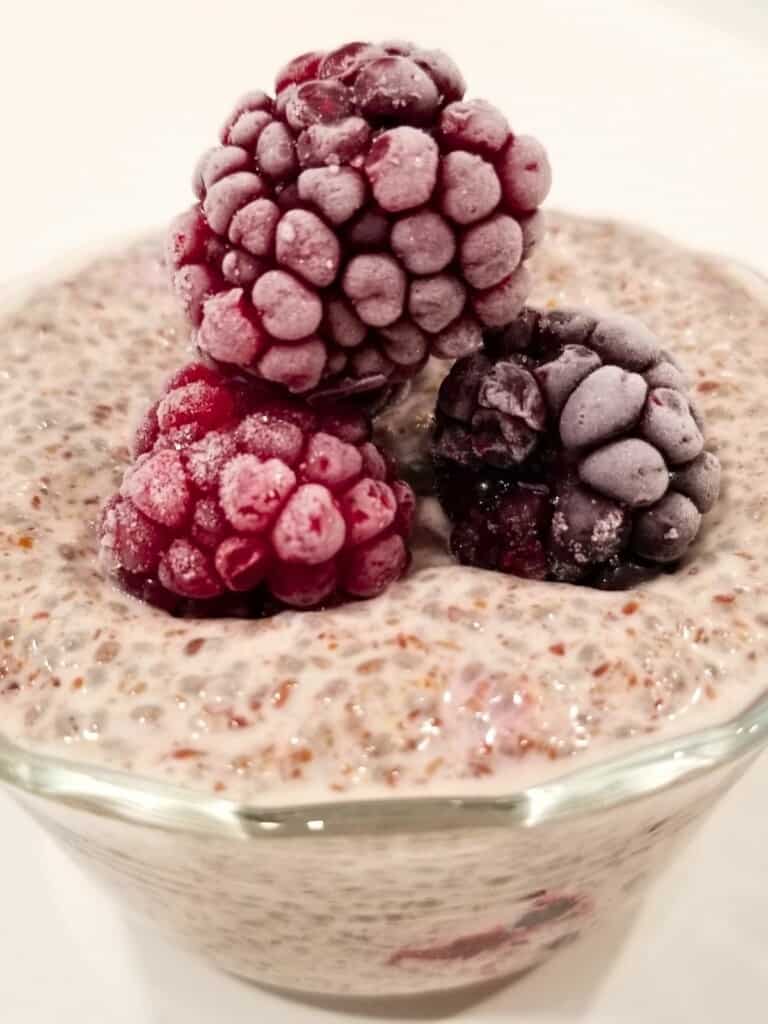
🫐 Sweet Low Histamine Snacks
Chia & Flax Seed Pudding
Beyond being one of the easiest flaxseed recipes I know, this quick chia and flaxseed pudding is rich in anti-inflammatory omega-3s, fiber, and plant proteins. With just 5 ingredients, it’s the perfect low histamine snack, breakfast, or dessert, no matter how you choose to customize it.
Berry Popsicles
Popsicles aren't just for summertime! I think that coconut-based fruit popsicles are my favorite thing in our freezer, and as a result, I usually have at least two flavors on-hand.
The ingredients are so simple: mashed fruit, coconut milk, and a bit of manuka honey or date syrup, if needed. Note that these are also great with mangoes, cherries, and raspberries (if tolerated).
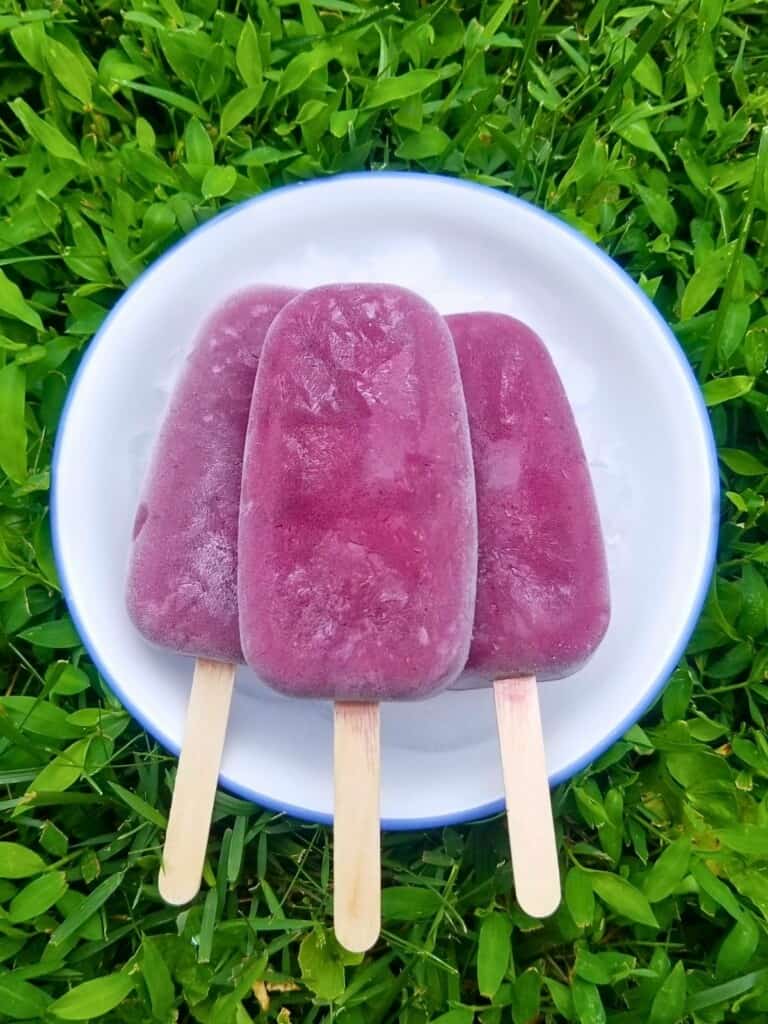
Turmeric Milk (Golden Milk)
This creamy golden milk may not be the conventional pick for a snack, but it's surprisingly filling as well as an earthy, anti-inflammatory beverage that’s perfect for warm weather or cold. Also known as turmeric milk or a turmeric latte, it combines just a handful of simple ingredients into one delicious drink!
Low Histamine Nut Clusters
These hazelnut crunch clusters are a simple low histamine dessert or snack you can prepare in just one bowl, with just 5 ingredients. They're sweet, salty, crunchy, and satisfying. You could also make them with macadamia nuts instead of hazelnuts, depending on tolerance.
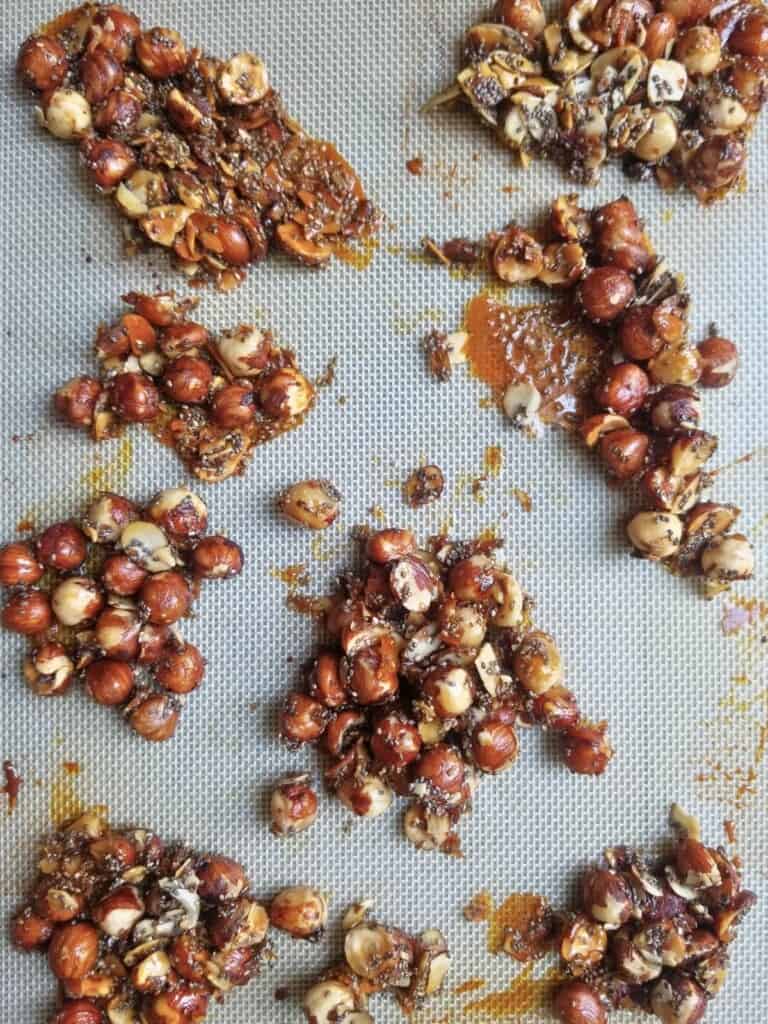
Apple Fritters with Glaze
While these do require you to have made them ahead, they freeze beautifully (yes, even the glaze!). They're also a low-sugar and low oxalate snack, which can be hard to find. With a mildly sweet, spiced undertone, these fritters are full of flavor, making them a great low histamine snack for fall.
Low-Sugar Halva
If you haven't heard of it, halva is this flaky confection that tastes like the insides of a Butterfingers bar. You can buy it pre-made from Hebel & Co, which has the cleanest ingredients list of the 10+ brands I've checked out, but also has the most histamine-friendly flavors.
Their Pistachio Nigella was the first to catch my eye, but the Superseed and the Vanilla both also feature strongly antihistamine inclusions. This is an affiliate link to buy the halva, if you'd like to support the site.
Natural sugars are high up on the list of ingredients for Hebel & Co's halvas. But note that each 32g serving of their Superseed halva contains 6g of sugar balanced out by 5g of protein, so the potential inflammatory effect is kept in check.
It also keeps in the fridge for a week or two, and it tastes & feels special enough for a small amount to be satisfying. This isn't something I always keep around, but it is something I could never make properly at home!
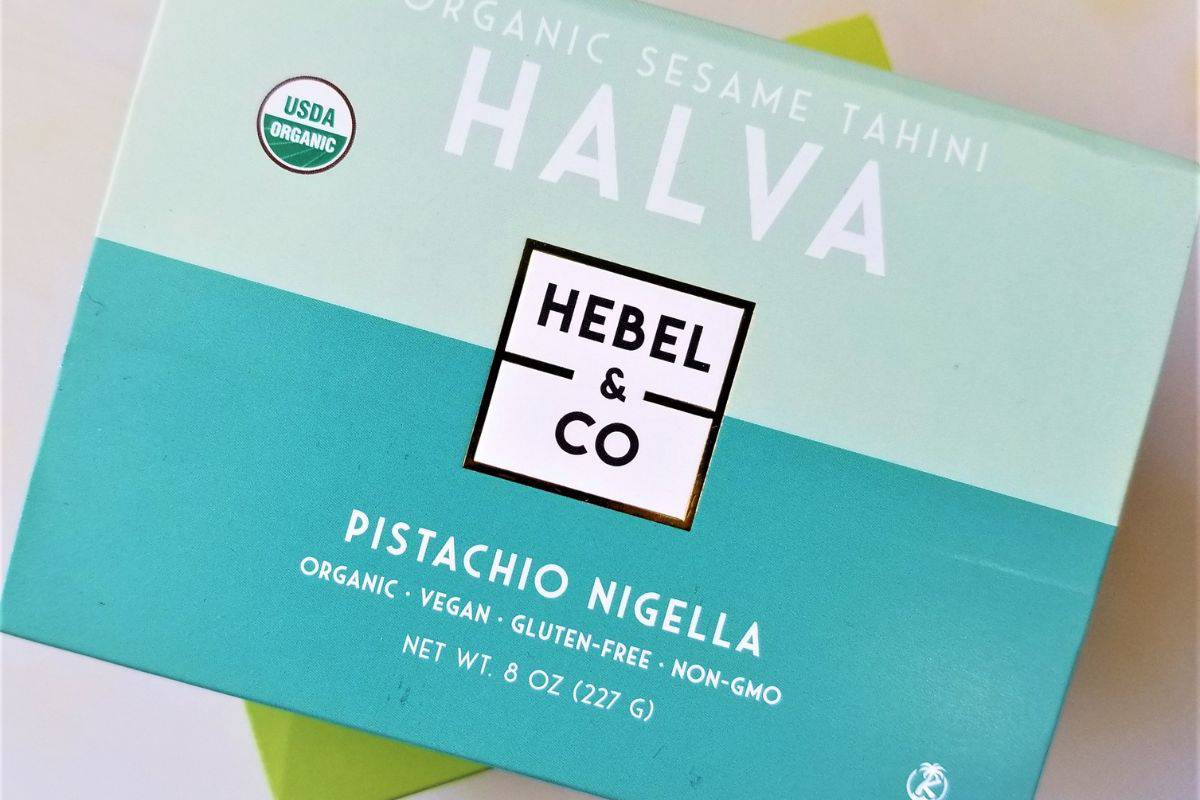
Dairy-Free Yogurt Substitute
There aren't many yogurt substitutes out there, but this one uses a trick I've considered trying in recipes, myself, and definitely will after this one. It uses coconut milk + an unusual low histamine thickener to make a yogurt-like treat you can enjoy with any number of your favorite toppings.
*Vanilla Almond Cookies
Okay I know cookies don't really sound like snack food, but if you had my sweet tooth you'd understand. These cookies are more comparable to the British concept of a biscuit, somewhere between a cookie and a cracker (in both sweetness and texture).
I like to undercook these cookies and serve them with berries and coconut cream after lunch, but if you're just looking for something snacky on the sweet side, this is for you. Recipe contains eggs.
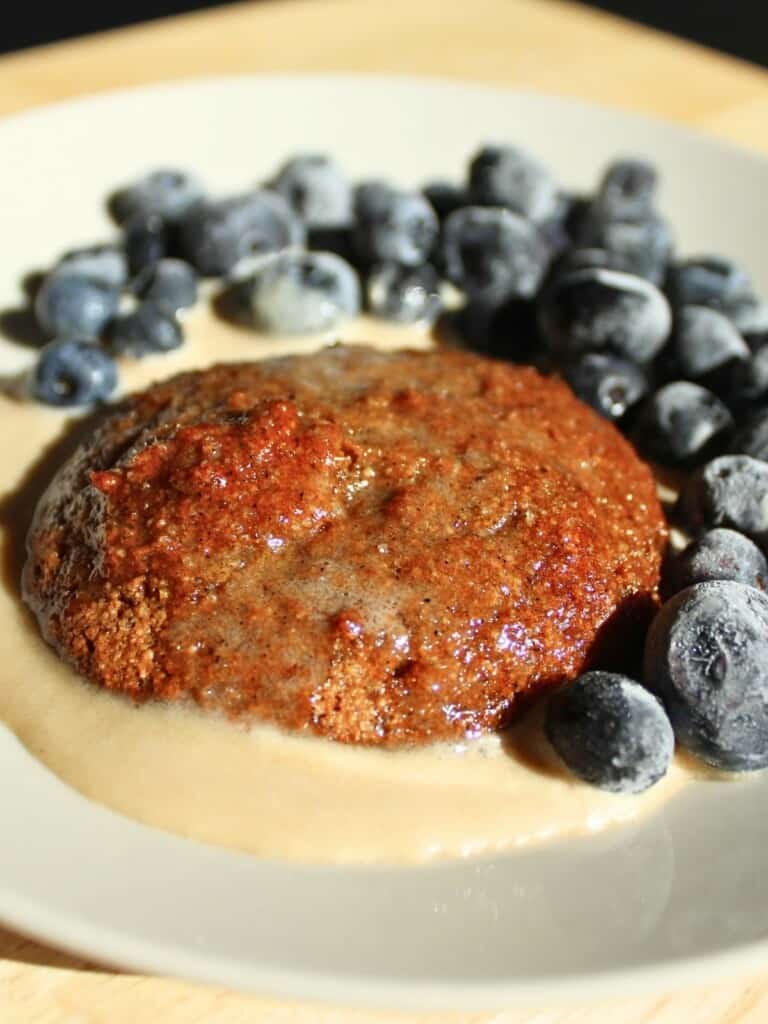
Candied Nuts or Seeds
These candied nuts (or seeds!) are sweet without much sugar, salty enough for balance, and rich in both healthy fats & protein. With only 2 teaspoons of low histamine sweetener, the entire recipe below comes out to around 8g of sugar total, or just 2g of sugar per serving.
Unless you’re super sensitive to sweeteners, this amount won’t spike your blood sugar & the fat, fiber, and protein in the nuts will keep you fuller and happier than a grain-based snack.
🛒 Store Bought Low Histamine Snacks
- Popcorn
- Roasted Lotus Seeds
- Rice Cakes
- Potato Chips
- Tortilla Chips
- Popped Sorghum
- Pomegranate seeds, apples, and peaches

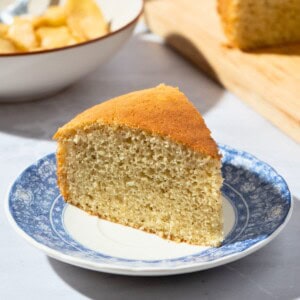











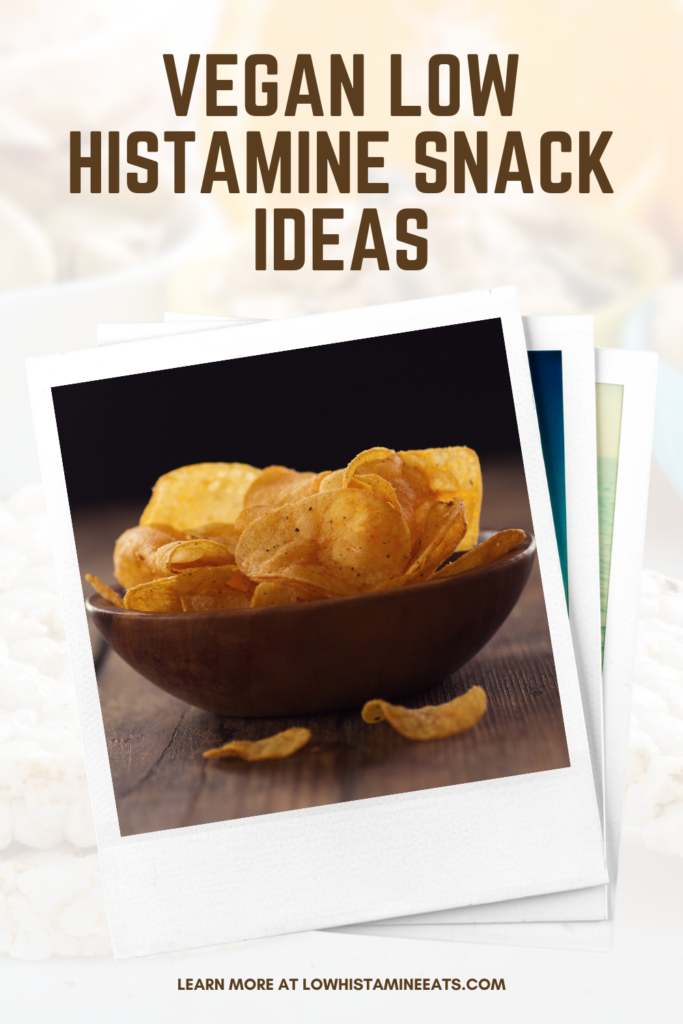

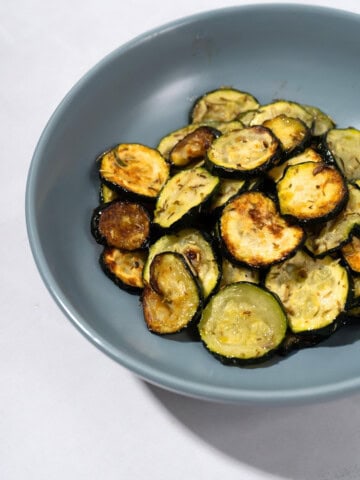
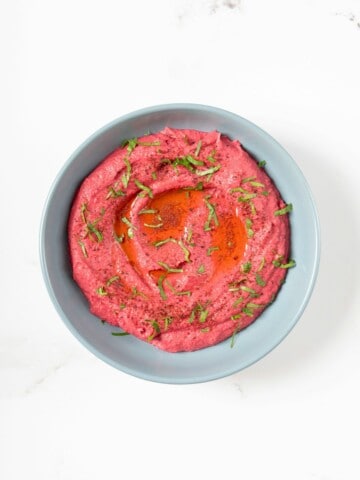
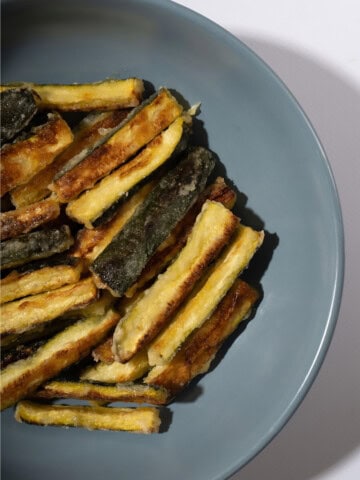
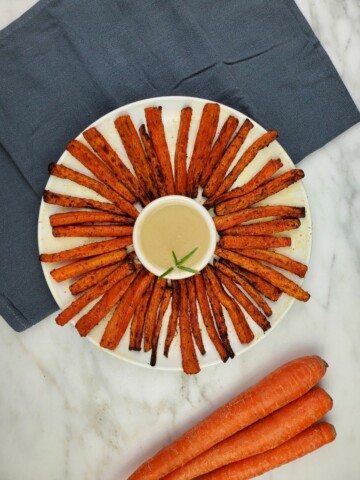
Natasha says
I absolutely love your website and all of your amazing ideas! I just made a grocery list for some of these snacks because I was struggling and I keep reaching for things I’m not supposed to eat and then suffering for it.
Thank you thank you thank you!!!
Max says
Thank you for the kind comment, Natasha! I'm so glad you've found this helpful, and I hope your symptoms ease soon. <3
Karen says
Love these!
Max says
Thanks, Karen! I'm glad you found some you like.
Naomi Schrecker says
Formally I was an enthusiastic cook, enjoying healthy foods from across the world. Two and a half years ago, I suddenly lost the ability to tolerate all but twenty nine, mostly low value items. Choice is further restricted because I select with dental health in mind.
I have specialist prescribed medicines which control skin and lung reactions but nothing is as effective in reducing digestive distress and brain fog, as my restricted diet. There was no effective help from dietitians and gastroenterologists, I had to develop a strategy on my own, using the internet and a symptom diary. It was a confusing and frustrating process, which lasted more than a year.
I want readers to know that I have found peer reviewed studies, particularly tables of the biogenic amine content of foods, best explain my adverse reactions. Until I sourced those, I could not understand why I was ill after meals which included normal servings of ingredients found in many low histamine recipes. These include: coconut, flax seed, almonds, and apples. Scientific data helped me to realise that some seemingly innocuous foods, are actually quite high in biogenic amines (eg histamine) and other irritants.
It is often written that foods vary depending on storage and that everyone has an individual tolerance level. There is however, some scientific food data which is reliable and helpful in deciding which foods to avoid.
Max says
I am so sorry you've been through that Naomi, and no doubt continue to deal with it still. There are definitely a lot of studies out there about the biogenic amine content in various foods, and for many people that is indeed the root of what they're sensitive to. I have met many people, however, who also find themselves sensitive to certain preservatives, to lectins, fructans, to a range of common pesticides, etc.
I'm glad you've gotten to the root of why so many seemingly innocuous foods were still bothering you. Though as you know from restricting foods for so long, it can be physically and psychologically damaging to cut out food which are otherwise healthy if you don't absolutely have to, and I don't want anyone to develop any unnecessary fear of foods when their diet may already be quite limited. So I hope that anyone seeing this who's been struggling with those same types of foods will consider that they may be sensitive to biogenic amines other than histamine, though if you're not, there still may be a different subset of chemicals your body has decided are the enemy.
Thank you so much for sharing what you've learned form your research, Naomi— I know it will help someone else who's been struggling with the same types of foods as you have.
Debbie says
Hi,
I am glad you found solutions. Would you mind sharing the link to your studies? Almonds among other foods bother me as well.
Thank you,
Debbie
Becky says
This is such a helpful list!
I love that you know about oxalates and combine that info with the low histamine ideas. We have to not go too crazy with oxalates, so this is super helpful.
Also, I loved reading your comment about legumes. I was so disheartened when I saw legumes on some of the lists of high histamine foods because we eat legumes at almost half of our meals.
Thanks again for such a great resource!
lowhistamineeats says
Thank you, Becky! I'm glad to be of help. I've had oxalate issues at one point in the past, and it seemed to have been triggered by a mold overgrowth toxicity, so I can relate to avoiding oxalates (albeit for just a bit). I'm still doing more research into the more common plant toxins that seem to cause trouble for many HIT sufferers, but I'm trying to keep everything up-to-date & as detailed as possible! Thanks for your comment.
Elaine Butler says
Hi there. I read legumes were high in histamine but I see hummus on this list. Was the informaton I read on other sites incorrect?
lowhistamineeats says
I have seen it written a few times in a few places that legumes are high histamine, but from my own research & on the low histamine foods list that I follow (this one from Mast Cell 360), they are NOT high histamine. Additionally, in my experience they aren't high histamine and have never triggered my symptoms. However there are three substances in legumes/nuts/beans which may cause stomach upset or symptoms in sensitive populations (such as those with histamine issues): lectins, oxalates, and phytic acid.
None of these are directly related to histamine, and I get into each of these more in this article on almonds, but suffice it to say that the information you read on other sites was factually incorrect, but the warning is one to heed during the elimination phase of your diet, in particular if you get stomach pain along with your other HIT symptoms. I certainly wouldn't advice reintroducing any legumes/nuts/beans in the first month of your low histamine diet's elimination phase, but assuming that histamine is your only issue, very few legumes, nuts, or beans are actually high histamine (though there are some, so look at food lists before re-introducing any). Hope this clears things up!
Sara says
Hi and thank you for all your hard work and sharing your knowledge with all of us who are struggling. I wanted to add that I recently tried making hummous and peeled the skins off prior to blending and that seemed to help greatly. May be worth checking into. It probably vhanges the nutrition but I had little reaction this way.
Max says
Thank you for the tip, Sara! I always soak dried chickpeas at home to make hummus, but only ever get some of the skins off after ocoking. I'll have to give skinless a try! 🙂